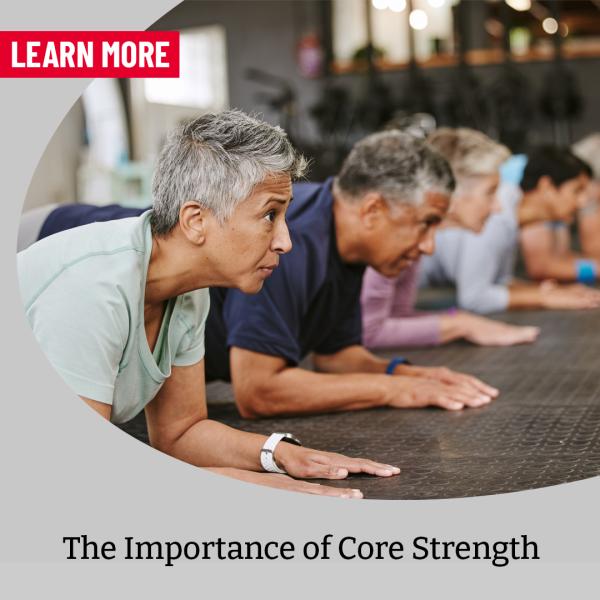
Reviewed and contributions made by Director Case Manager David Ensign
When you hear the words "Core Muscles" do you picture six pack abs?
Many people do.
However, this critical group of complementary muscles consists of A LOT more than just abdominal muscles. "The Core" includes 29 mid and lower back muscles, pelvic floor, buttocks and hips. Together, they act as the cornerstone for all the body's movements and must develop together.
Get Your Free Physical Therapy Screening
Not sure where to start with physical therapy? Get a free screening and let us help you start the path to recovery today.
GET MY COMPLIMENTARY SCREENING
The Importance of Core Strength
Whether lifting a box, or running a marathon, you need strong core muscles for functional movement, balance, performance and injury prevention. David Ensign, athletic trainer and Director Case Manager with ATI, shares what you need to know about your "core."
"Without proper activation of the core muscles, an individual will have decreased control and coordination of his or her body and potentially develop decreased efficiency of movements and compensatory patterns," says Dave. "It is important for the body to have sufficient core stability and strength to function optimally, whether for everyday living, sports or work activities."
What are the Core Muscles?
The core muscles consist of two groups:
- Inner Core Muscles: These deep internal muscles are the core's stabilizers. They are attached to the spine and support movement.
- Outer Core Muscles: These muscles support the inner core. They work in conjunction with the inner core muscles to move the body.
Core Stability vs. Core Strength
While core stability and strength may appear synonymous, they are different.
- Core Stability: This is the ability to stabilize the spine with muscle activity and the focus on the inner core muscles.
- Core Strength: Refers to the muscles' ability to move, involving the outer core muscles.
Benefits of Core Muscle Strength
Core muscles and strength are much more than six-pack abs or a toned stomach. A strong core has several benefits, including:
- Improved posture, balance and stability
- Reduced risk of injury
- Improved athletic performance
- Reduced strain on spine and back pain
- Enhanced body movements
Core Strengthening Exercises
When it comes to strengthening your core, many people make the mistake of only training the rectus abdominal – or your stomach muscles. But, to ensure proper core strength, its important to how to brace the core.
To properly brace your core, Ensign recommends:
- Begin by standing tall with your feet hip-width apart or laying on the ground with your knees bent and feet flat on the ground
- Rotate the pelvis (hips) forward and back within a comfortable range and then find the middle position
- In this position, activate the core muscles by contracting them as if you were about to be punched in the stomach or slow say “Pssst” which will help activate the core muscles
- Hold the contraction for 5-10 seconds without holding your breath.
You should be able to talk, breathe, and move properly while bracing your core muscles. When bracing the core, it is recommended you progress to a 20-second hold before initiating more advanced core strengthening exercises.
Prone Planks, Side Planks, Bridges, Bird Dogs, and Trunk Rotations are simple exercises to address all aspects of the core. Core strengthening should not cause or increase pain, so if you experience pain, stop.
How Physical Therapy Can Help
If you are having pain or feel you have a weak "core," physical therapy can help. A physical therapist will evaluate the core to determine deficiency with specific muscles or movement patterns and establish a plan of care to achieve goals. They can help by utilizing manual therapy to address tight muscles and an individualized stretching and strengthening program.
Experiencing aches and pains and thinking your core muscles could be to blame? Stop by any ATI Physical Therapy for a Complimentary Injury Screening. ATI can evaluate your injury and provide you with options for continued care. You'll see a licensed provider who will provide appropriate recommendations.
